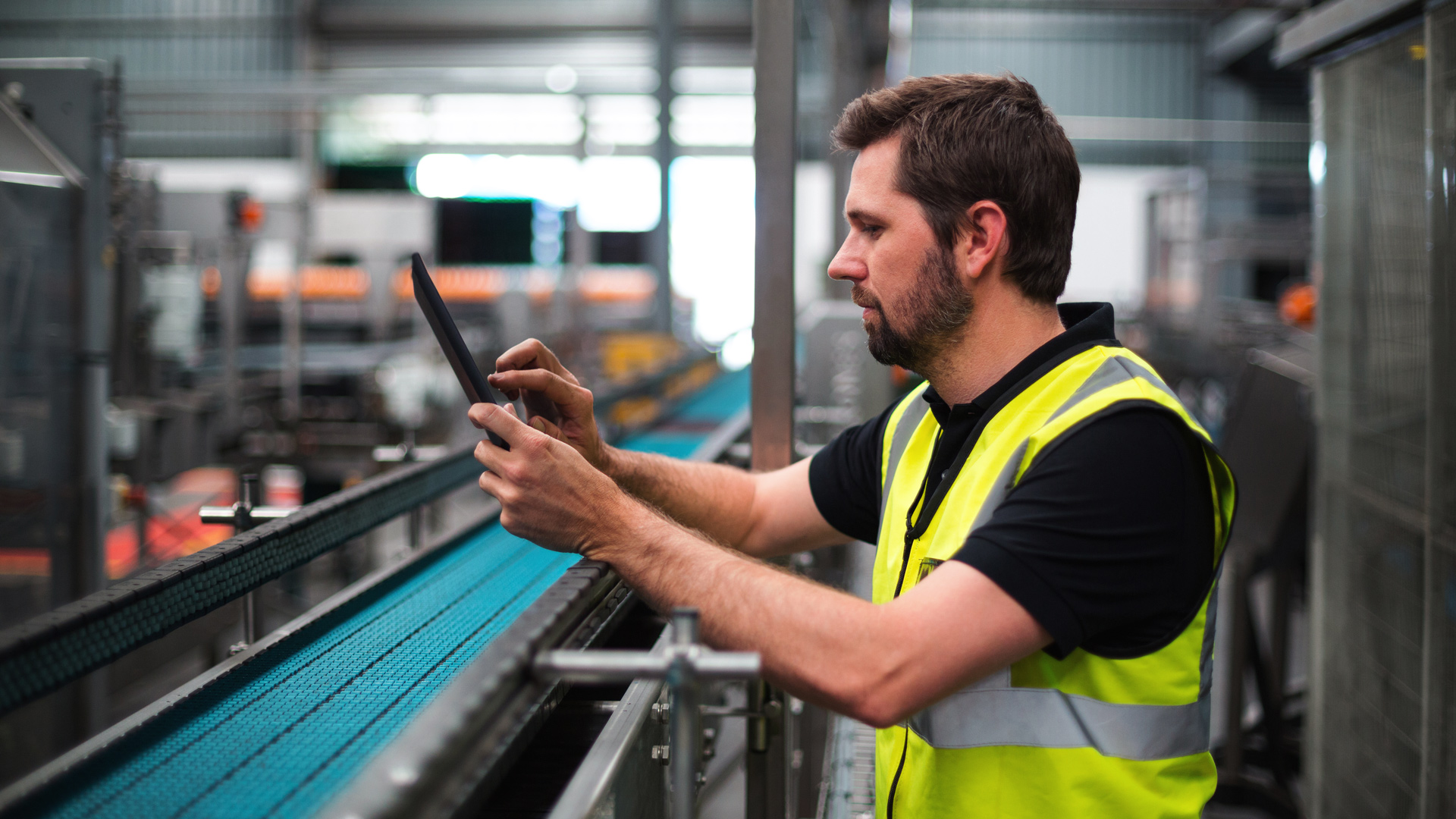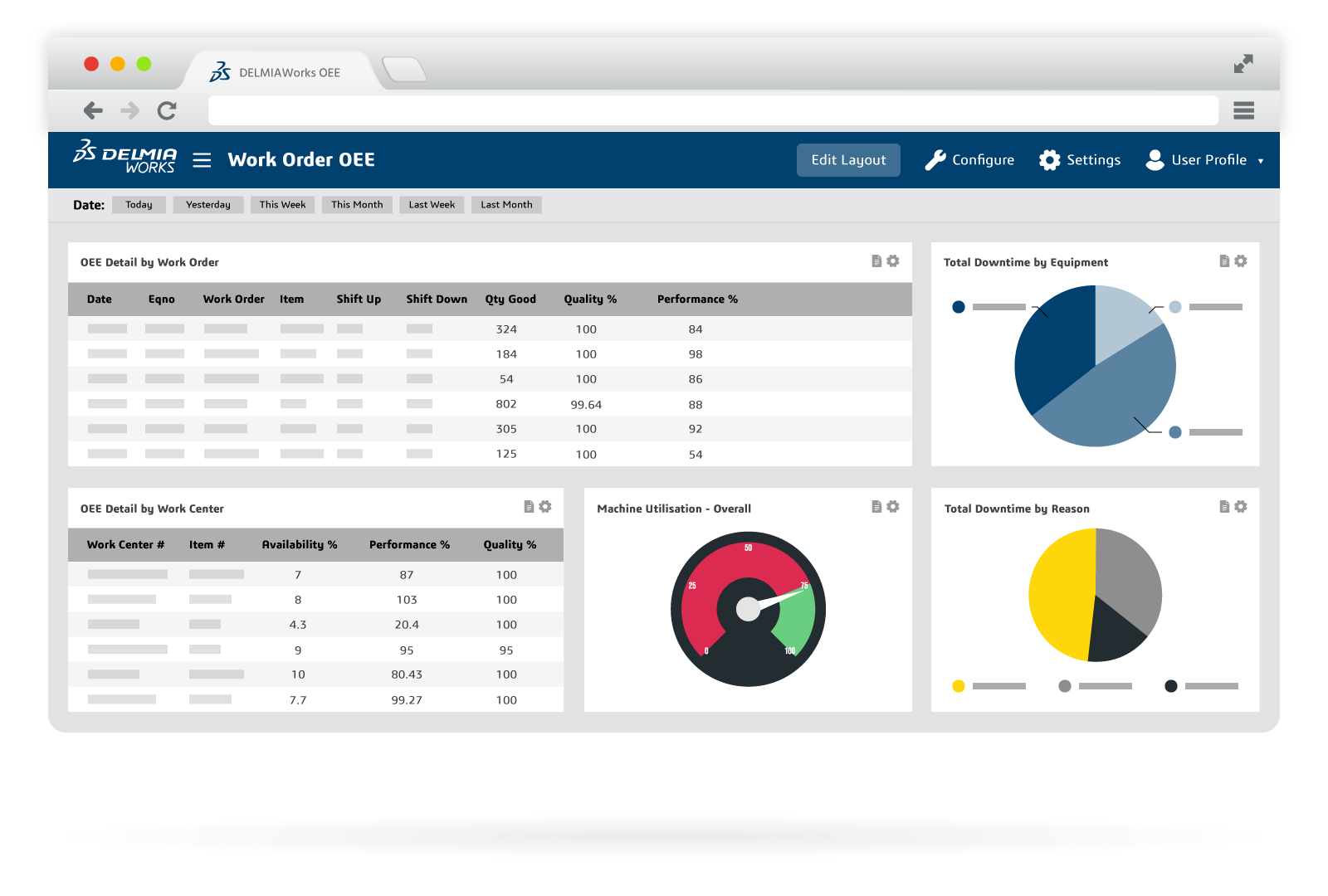
Manufacturers know better than anyone else how the slightest inefficiencies can have a significant impact on the profitability of a job.
That’s why ensuring equipment and machinery are running at optimum efficiency, as often as possible, is absolutely critical for manufacturers.
Businesses measure their Overall Equipment Effectiveness regularly to try and ensure their business runs as efficiently as possible.
In this post we’ll dive into what Overall Equipment Effectiveness (OEE) is and what DELMIAWorks is doing to help manufacturers operate more efficiently.
What is Overall Equipment Effectiveness (OEE)?
Overall Equipment Effectiveness, or OEE for short, is exactly what it says on the tin.
It’s a way to determine the efficiency of the equipment that you’re using in your manufacturing operation and was developed as a way to support Lean Manufacturing initiatives.
OEE is scored based on a formula that uses three key metrics to calculate how well a piece of equipment or machinery is performing:
- Availability = Operating Time / Planned Production Time
- Performance = Ideal Cycle Time / (Operating Time/Total Piece)
- Quality = Good Pieces / Total Pieces
The OEE is then calculated as follows: Availability x Performance x Quality.
Or, in its simplest form: (Good Count × Ideal Cycle Time) / Planned Production Time
By understanding the Overall Equipment Effectiveness of all of your factory machinery, it allows you to identify any areas where change may need to occur in order to help you better utilise your resources.
It also provides the data to help you make informed decisions to increase or maintain your efficiency, which can save both time and money for your business.
Using software to measure the OEE of your factory machinery is something you may already be doing, but there’s a key difference with OEE in DELMIAWorks that sets it apart from the competition.

How can DELMIAWorks help you improve your OEE?
There’s one key reason why DELMIAWorks is ahead of its competition when it comes to helping manufacturing businesses improve their OEE.
Real-time data.
Good data is the key to making good decisions and DELMIAWorks is able to use its real-time production data to inform you about the efficiency of equipment as it’s in use, meaning you can react to any manufacturing inefficiencies in the moment.
The real-time shop floor data flows automatically from the DELMIAWorks MES and modules into a simple, intuitive presentation of Overall Equipment Effectiveness (OEE) factors.
Your key personnel are then provided with the easy-to-understand visual data to take action and respond instantly to fluctuations in machine availability, performance and quality.
Having access to a wealth of real time data about your manufacturing operation can also help the planners to plan more efficiently, which can reduce the set up time for each job, making the entire manufacturing process more efficient.
What’s the difference between OEE and Utilisation?
When it comes to the effectiveness of factory equipment and machinery, it’s not uncommon for businesses to just look at the data generated for the time a machine is utilised.
Whereas OEE is actually more to do with the good time that a machine is utilised, as Quality is one of the elements factored into the formula used to determine the OEE of a machine.
The performance is determined by the number of good parts produced as a percentage of the total parts produced and this allows it to work out the amount of good time that a machine is utilised.
Ready to improve your OEE using real-time data?
Book a free consultation with our team today to discover how DELMIAWorks can use real-time data to help you improve your OEE and make your manufacturing operation more efficient.
Up Next:
In our next post we’ll be digging into Maintenance Repair and Overhaul (MRO), so keep your eyes peeled on our blog to see how DELMIAWorks can help you improve reliability and longevity of your manufacturing equipment.
Posted by Rob on 6th December 2021.

